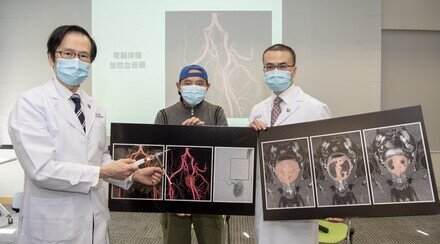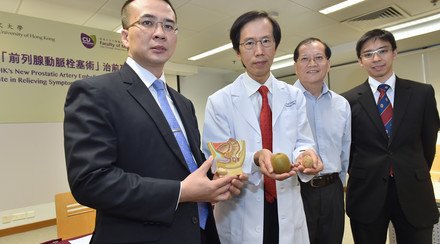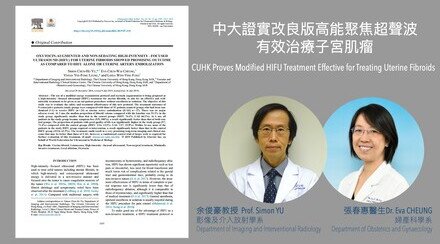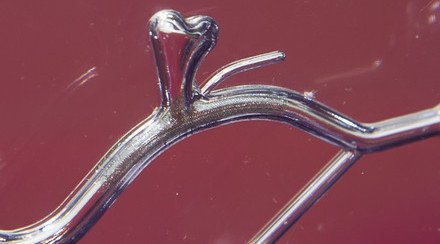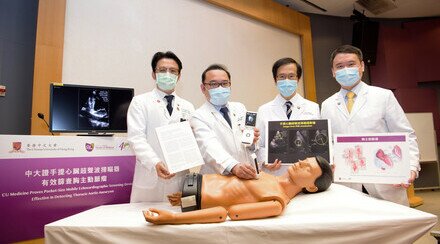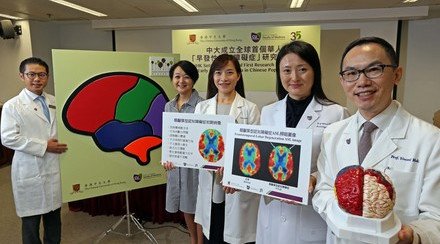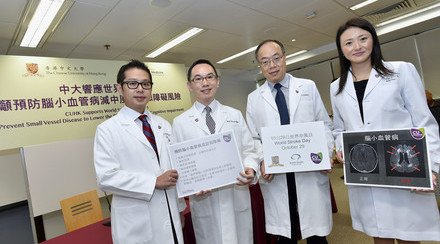CUHK Proves Prostate Artery Embolization Effective for Benign Prostatic Hyperplasia
Benign prostatic hypertrophy (BPH) is a common health problem among middle-aged and older men globally which may gradually lead to voiding dysfunction. The Department of Imaging and Interventional Radiology at The Chinese University of Hong Kong (CUHK) and the Vascular and Interventional Radiology Foundation Clinical Science Centre jointly carried out a clinical study on the use of a minimally invasive treatment called ‘Prostate Artery Embolization (PAE)’ on patients with BPH in 2015. After 19 months of study, the research team proved that PAE is highly effective in relieving complete urinary bladder outflow obstruction and improving lower urinary tract symptoms arising from BPH, with success rates of 90%. The research findings have been published in an European medical journal Cardiovascular and Interventional Radiology.
About 720,000 men in Hong Kong suffer BPH
The prostate is a male sex gland which produces a thick fluid that forms part of the semen. BPH is a non-malignant enlargement of the prostate gland. It is common among older men and the prevalence increases with age. When sufficiently large, the hyperplastic nodules will compress the urethral canal to cause an obstruction of the urethra and interfere with the normal flow of urine. Based on clinical statistics[1], about 50% of men aged 50-60 and 90% of men aged above 80 suffer BPH. According to the statistics of the Hong Kong population in 2016, it is estimated that 720,000 men in Hong Kong suffer BPH.
Although 50-60% of BPH patients do not have any clinical symptoms, BPH is a progressive disease that may give rise to symptoms such as urinary urgency, urinary hesitancy, frequent urination, weak urine flow, urinary retention and even bloody urine. Incomplete voiding may increase the risk of urinary tract infection and urinary bladder stone formation. Other clinical consequences include acute urinary retention, chronic urinary retention and renal failure.
Success rate of Prostate Artery Embolization reaches 90%
The research team from CUHK performed PAE on 58 patients with BPH between June 2015 and December 2016. The procedure involves embolization of the prostatic arteries using microspheres of 100 to 300 micron in diameter through superselective catheterization of the arteries under X-ray control. Embolization leads to ischemic necrosis and volume reduction of the prostate. As a result, obstruction to urine outflow from the urinary bladder is relieved.
Twenty-one out of 58 patients suffered complete urinary bladder outflow obstruction before the treatment, and the obstruction was successfully relieved within 2 weeks in 19 patients (90%) and had their foley catheter removed. Overall speaking, lower urinary tract symptoms were successfully relieved in 53 out of all 58 patients (91%).
Prof. Simon YU, Chairman, Department of Imaging and Interventional Radiology, Faculty of Medicine, CUHK and Director of the Vascular and Interventional Radiology Foundation Clinical Science Centre said, ‘Existing treatment options for BPH patients who suffer moderate to severe lower urinary tract symptoms, bothersome symptoms, or history of retention of urine include medications and surgical treatment such as transurethral resection of prostate (TURP). After the 19-month clinical study, we can now prove that PAE is highly effective in treating BPH patients, which carries no severe discomfort or complications.’
Professor Yu added that the median International Prostate Symptom Score (IPSS) of all 58 patients decreased from 21 at baseline to 6 in the first month (the number increases with severity) and further dropped to 2 in the 12th month after PAE, indicating that the treatment is highly effective and the outcome persistently improves. Besides, the International Index of Erectile Function remained unchanged from the baseline to 12 months after PAE, indicating that the treatment has no negative effect on erectile function. Other indexes such as the median quality of life score, objective investigations such as urine peak flow rate and residual urine also showed persistent and significant improvement in the first year.
New research aims to enhance safety of PAE
A major risk of PAE is embolization of the arteries of the urinary bladder, rectum, and penis, leading to ischemic necrosis of these organs. This complication may arise from intra-prostate anastomoses that connect prostate artery to the arteries of these organs, leading to shunting of embolization microspheres to these organs. It is important for the performing doctors to recognize the presence of such anastomosis and embolize such anastomosis to protect these organs and therefore adequate training is mandatory. The research team of CUHK is now working on novel techniques to enhance the safety of PAE.
For BPH patients who have moderate to severe lower urinary tract symptoms, please email Ms. Chong (siuman@cuhk.edu.hk) for more details about PAE.
[1] Hospital Authority Smart Patient webpage – About Benign Prostatic Hyperplasia: http://www21.ha.org.hk/smartpatient/tc/chronicdiseases_zone/details.html?id=176
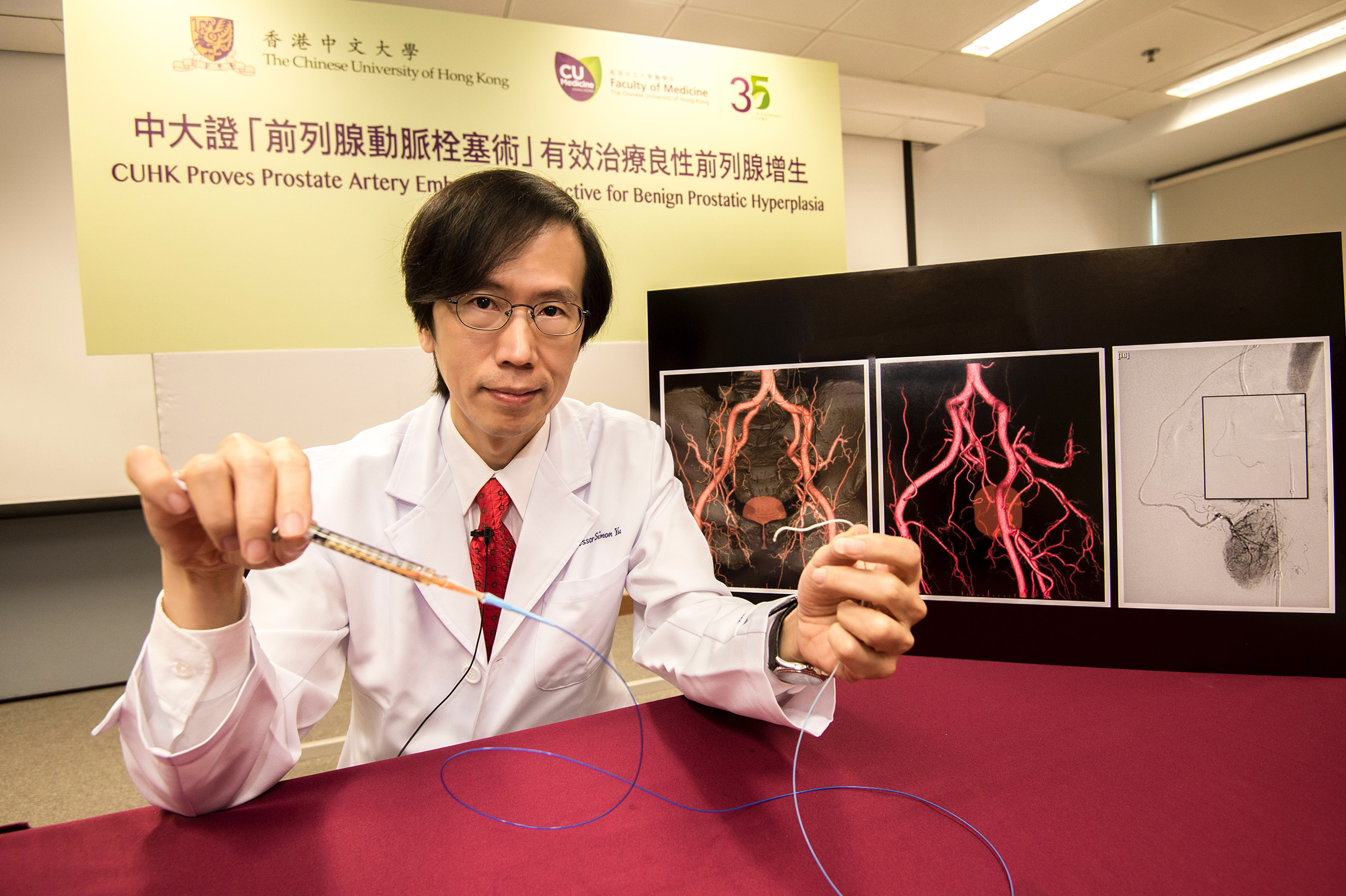
Prof. Simon YU, Chairman, Department of Imaging and Interventional Radiology, Faculty of Medicine, CUHK and Director of the Vascular and Interventional Radiology Foundation Clinical Science Centre, proves in his recent study that Prostate Artery Embolization is a highly effective treatment for Benign Prostatic Hyperplasia, with success rates of 90%.
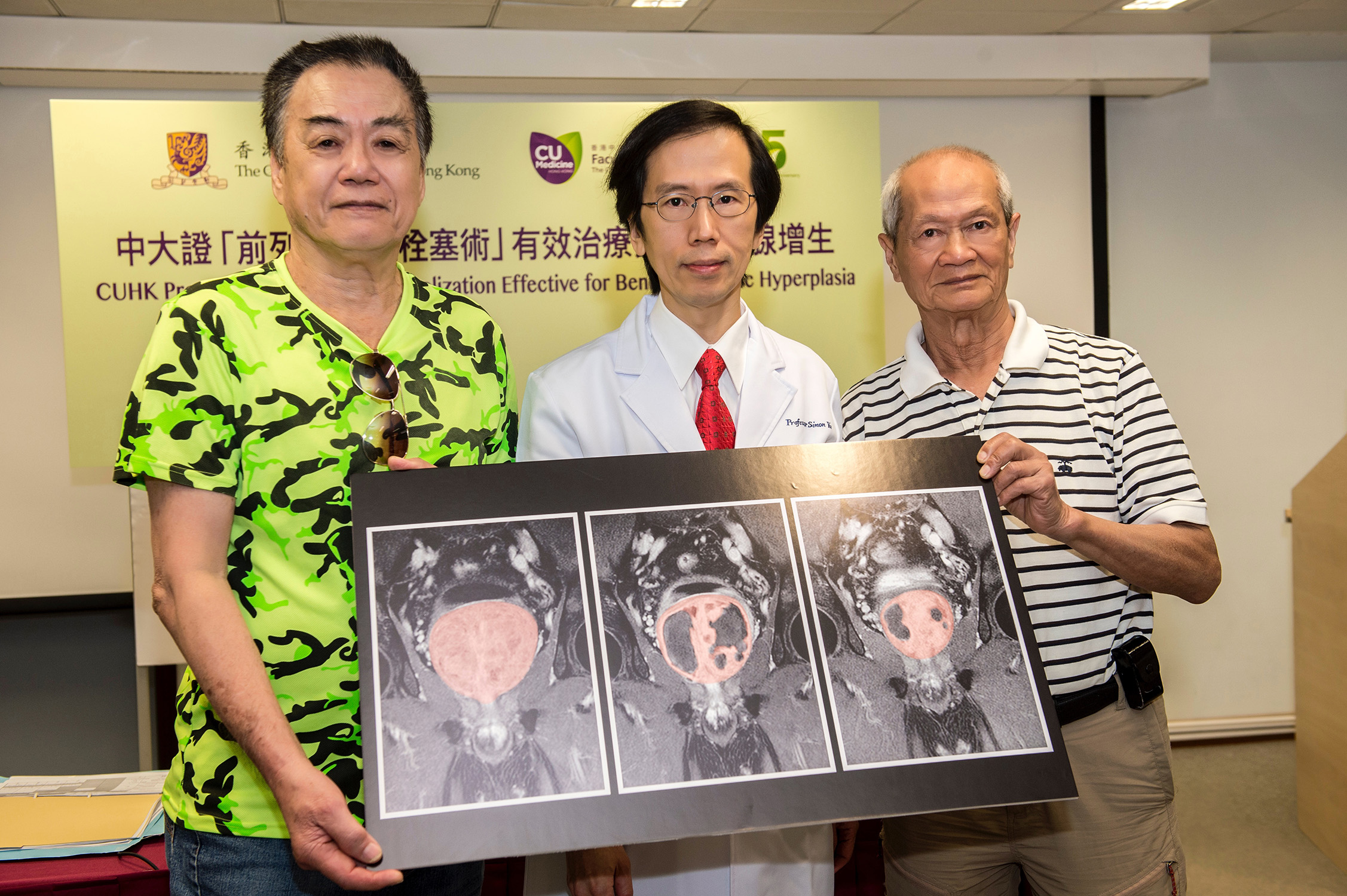
Mr. TSUI (left) and Mr. CHOW (right) have both experienced voiding problems due to BPH. They say PAE has greatly relieved the symptoms and there was no discomfort during the treatment.
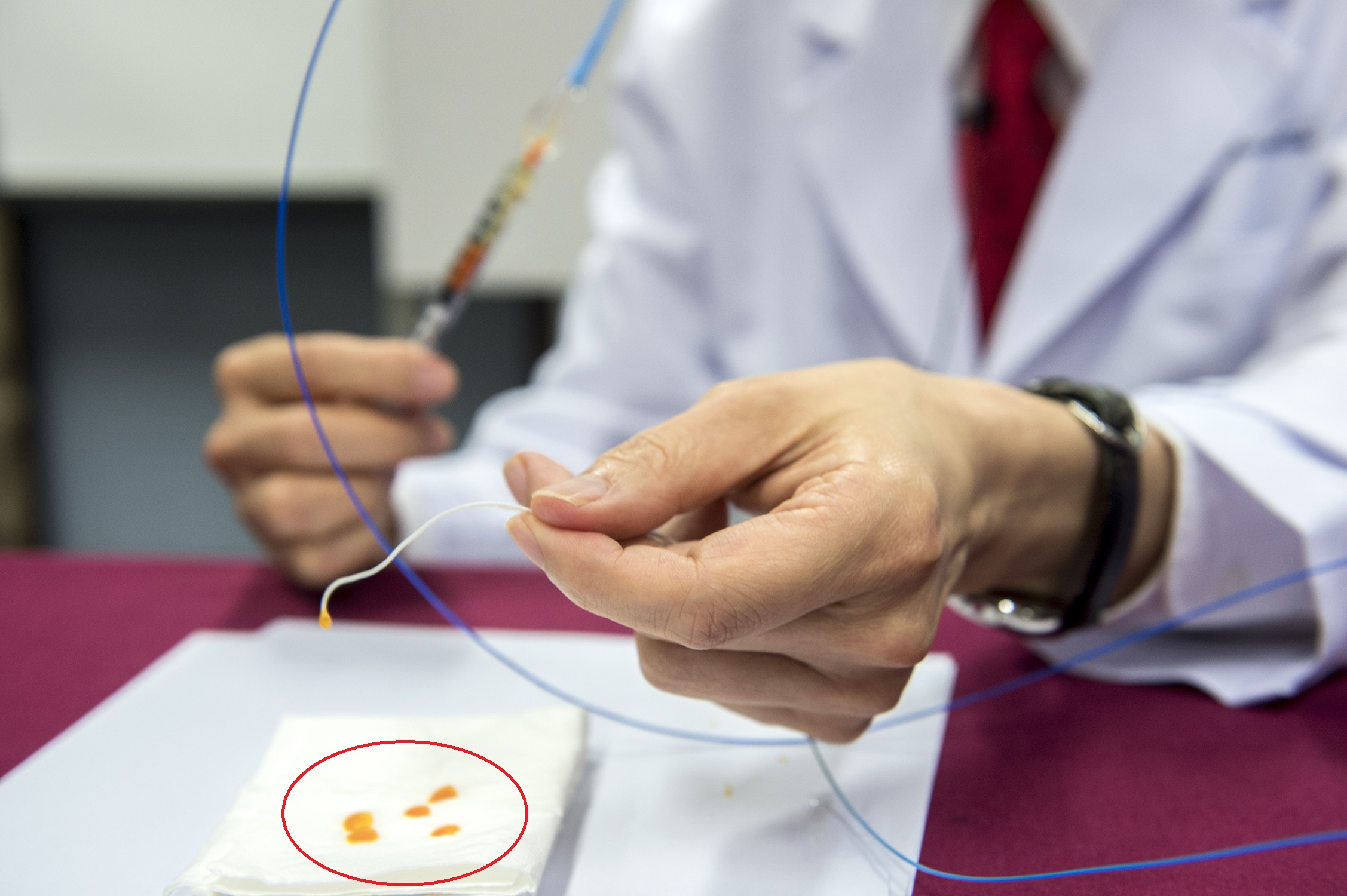
Professor YU shows the microspheres (the orange molecules circled in red) and catheter used in PAE. The microspheres are of 100 to 300 microns each in diameter, which are used to block blood flow in the microvascular of prostate.


